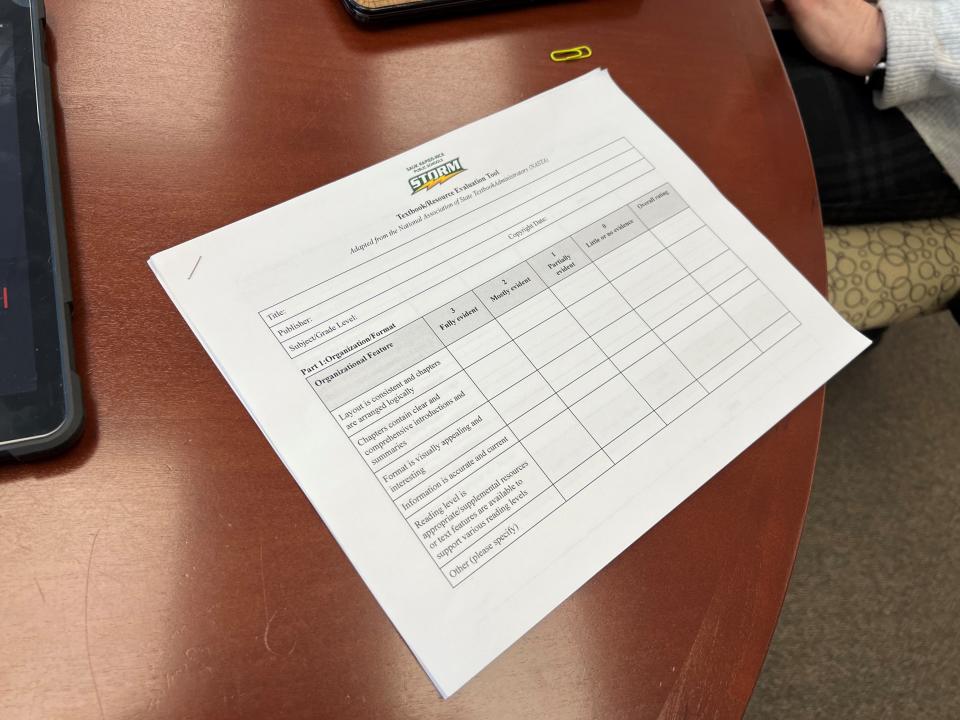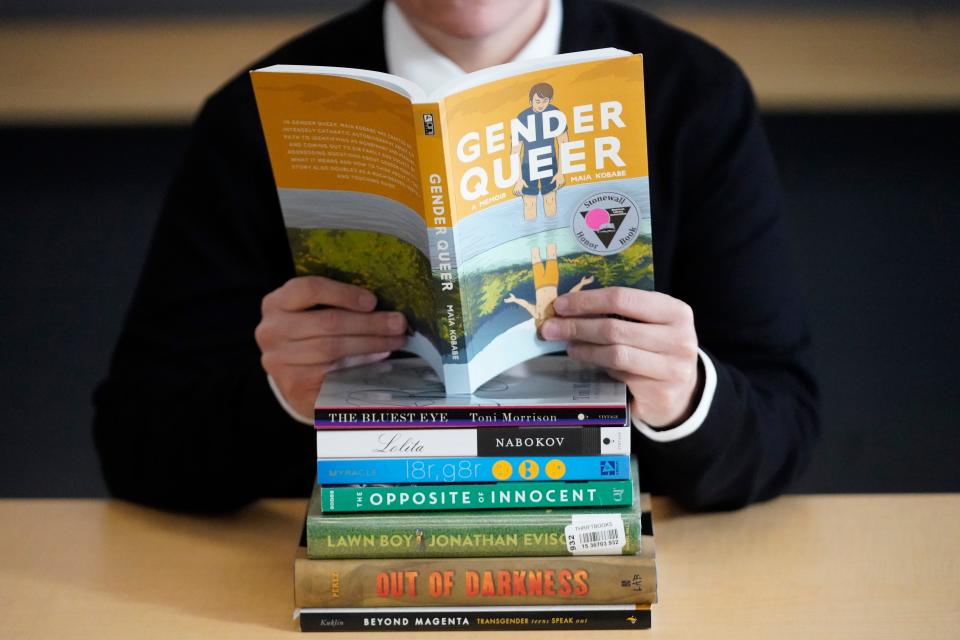With book bans on the rise, public school districts in St. Cloud mostly avoid controversy
As parents and school districts across the country debate banning books in schools, the St. Cloud area has remained mostly unaffected, according to local leaders.
According to national report released in September, more than 1,600 book titles have been removed from public school libraries in more than 2,500 individual cases. These cases were recorded by PEN America, a national nonprofit focused on defending freedom of expression through literary work.
St. Cloud area schools still field requests, but systems in place are designed to make the process civil.
Tami DeLand, director of community engagement and communications for St. Cloud Area schools ISD 742, explained that for her district a review begins with the concerned party "contacting the building administrator with their concern. The administrator talks with the concerned person and then schedules a review of the materials, informs the appropriate teacher, and tries to resolve the concern. Alternate resources can be provided for the student. If the concern is not resolved at the building level, steps are in place for the concern to then go before district administration." A district review committee may be convened as well.
Minnesota school districts must comply with state statute 120B.20 which states each school district "shall have a procedure for a parent, guardian, or an adult student, 18 years of age or older, to review the content of the instructional materials to be provided to a minor child or to an adult student and, if the parent, guardian, or adult student objects to the content, to make reasonable arrangements with school personnel for alternative instruction."
More: PEN America reportBook bans are on the rise. What are the most banned books and why?
Director of teaching and learning for Sauk Rapids-Rice public schools, Dr. Jenny Bushman, described her district's process as "preemptive." If an educator wishes to bring in a new book (or any resource material) that would be available to all students, they would be required to fill out an evaluation form. The form is used as a tool to see if it fulfils specific requirements before being seen by a curriculum advisory committee made up of parents/guardians, administrators, and teachers.
"It lets teachers vet the resource and allows for feedback by families as well," she said.
Bushman praised the "Resource Evaluation Tool" for why in her two decades of working for the district that no major challenges from parents or guardians were ever brought up.
Dr. Bushman did share story in which a student questioned the presence of one resource material but the at the end of the situation, that student was satisfied for the reasoning after a conversion with her. Bushman also said that they are currently developing a process if any person in the future wishes to challenge a pre-approved resource.

Sartell-St. Stephen school district has a similar process to Sauk Rapids-Rice through their "Selection of Instructional Resources" form which can be found in the district's webiste.
Despite receiving no challenges, the topic of banning books was part of the agenda for some school board candidates who ran for seats in the St. Cloud area school district but ultimately lost their election.
Every candidate that was backed by the Central MN Freedom Advocates mentioned or shared the same list of books that have sections that hold violent, racist or "adult" themes. The list also had “Call Me Max” by Kyle Lukoff, which is described as “an age-appropriate introduction to what it means to be transgender.” It also included the book "Drama" by Raina Telgemeier because “it has boys who like other boys and girls with other girls.”
More: St. Cloud school board electionVoters will determine top 6 St. Cloud School Board candidates in August primary
The reasoning behind those selected books are much in line with what the data that PEN America collected data in regard to the common traits that the books being banned share across the country.
41 percent explicitly address LGBTQ+ themes or have protagonists or prominent secondary characters who are LGBTQ+
40 percent contain protagonists or prominent secondary characters of color
21 percent directly address issues of race and racism;
22 percent contain sexual content of varying kinds, including novels with some level of description of sexual experiences of teenagers, stories about teen pregnancy, sexual assault and abortion as well as informational books about puberty, sex, or relationships;
9 percent are either biography, autobiography, or memoir; and
4 percent include characters and stories that reflect religious minorities, such as Jewish, Muslim and other faith traditions.
The Minnesota state statute also says alternative instruction may be provided by the parent, guardian, or adult student if the alternative instruction, if any, offered by the school board does not meet the concerns of the parent, guardian, or adult student.
The school board is not required to pay for the costs of alternative instruction provided by a parent, guardian, or adult student. School personnel may not impose an academic or other penalty upon a student merely for arranging alternative instruction under this section. School personnel may evaluate and assess the quality of the student's work.

Other information from that report showed that nearly 25 percent of works that were removed were non-fiction and the rest were fiction.
This article originally appeared on St. Cloud Times: While country struggles with book bans, St. Cloud mostly unaffected

